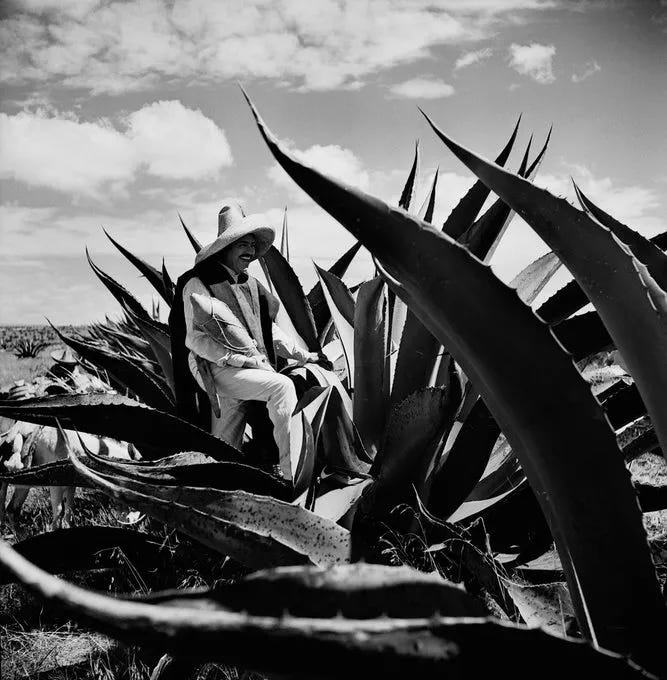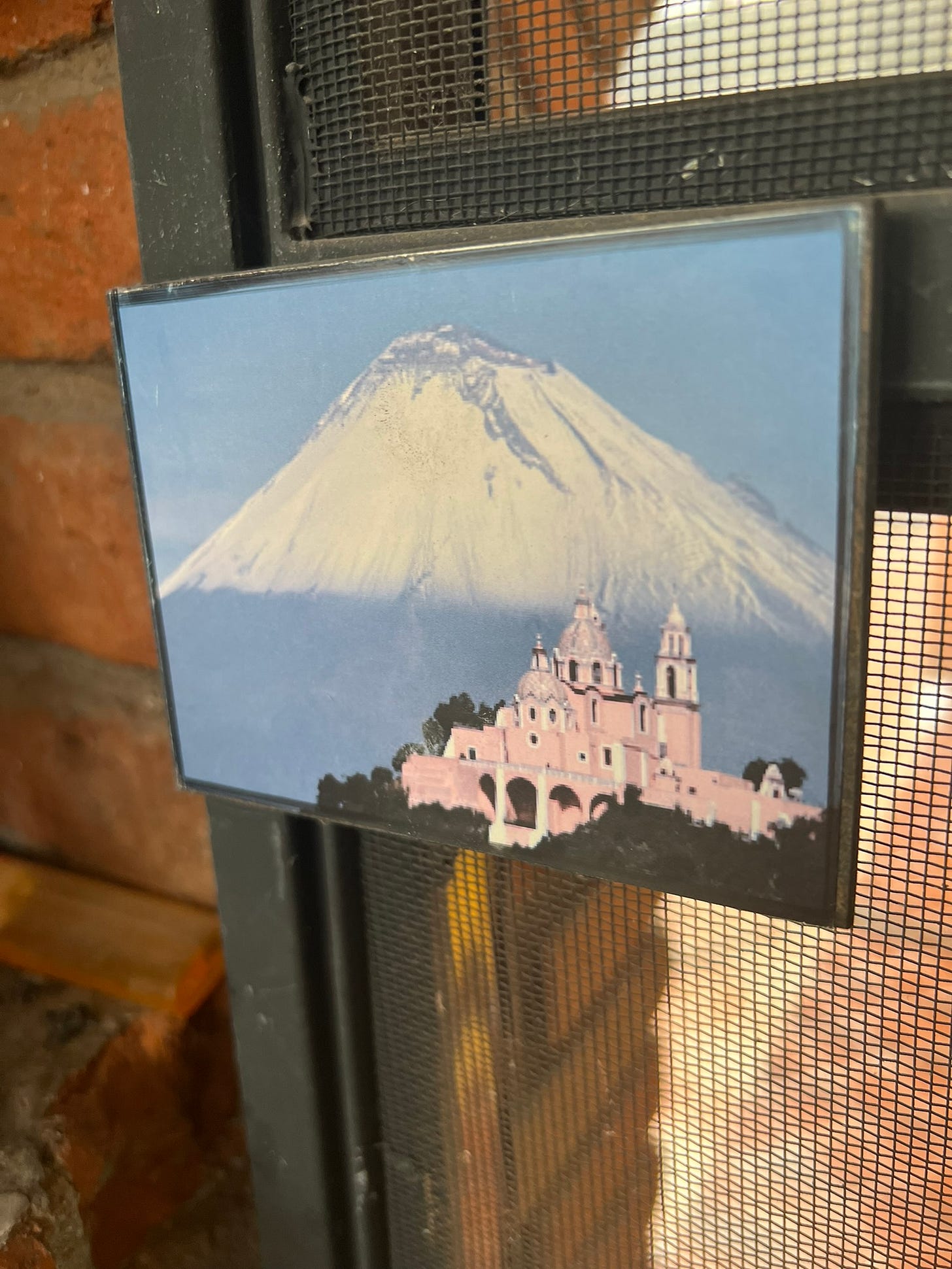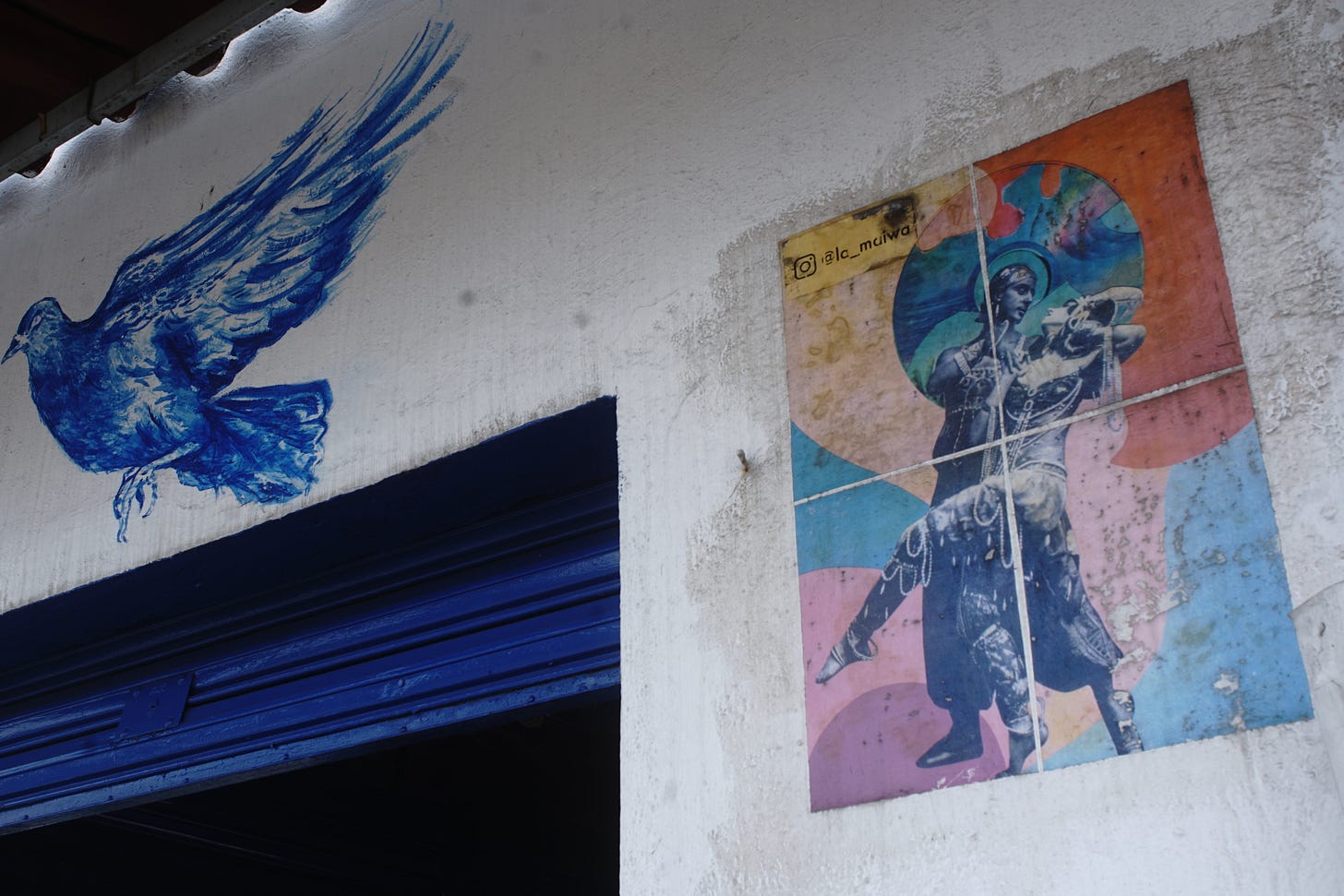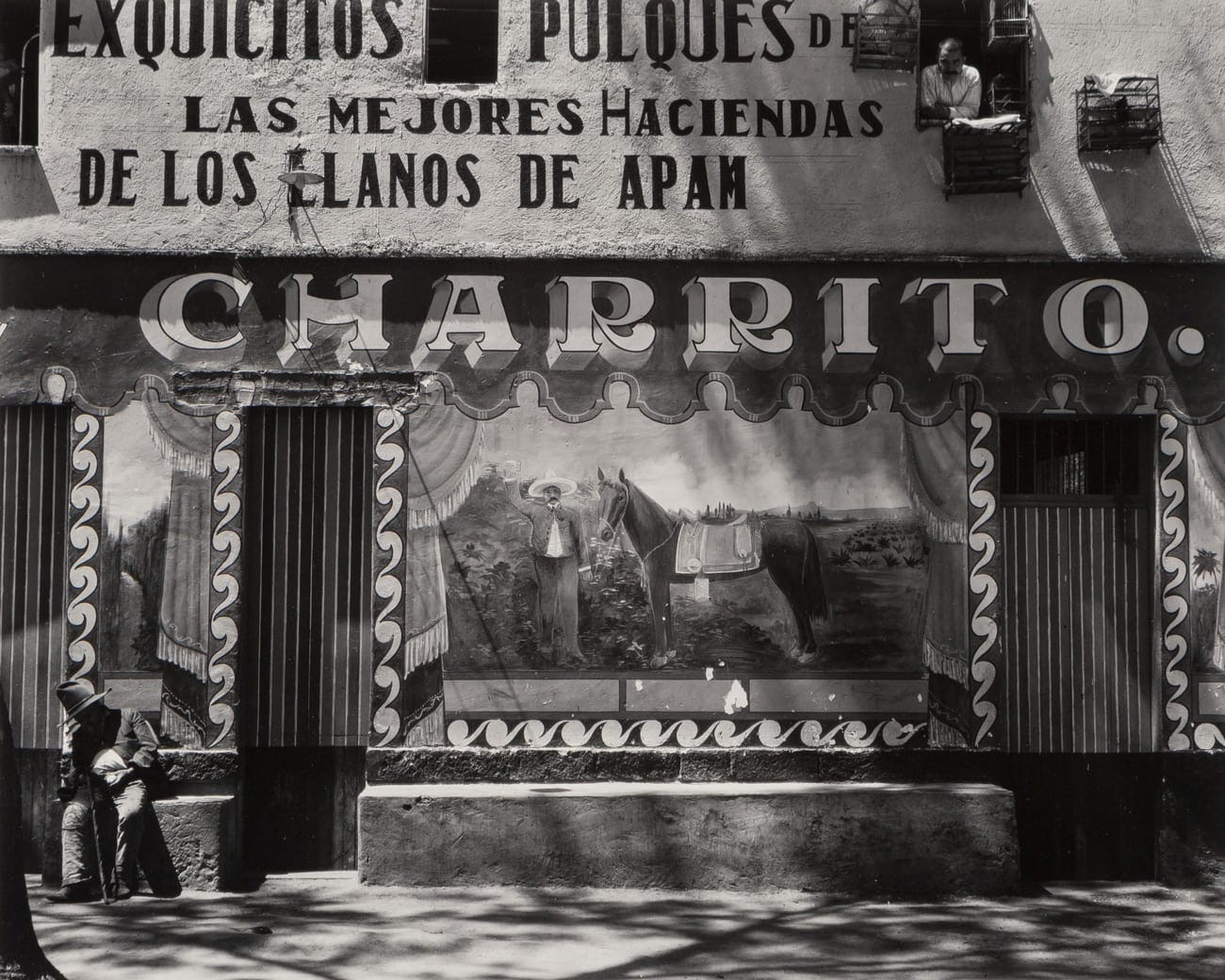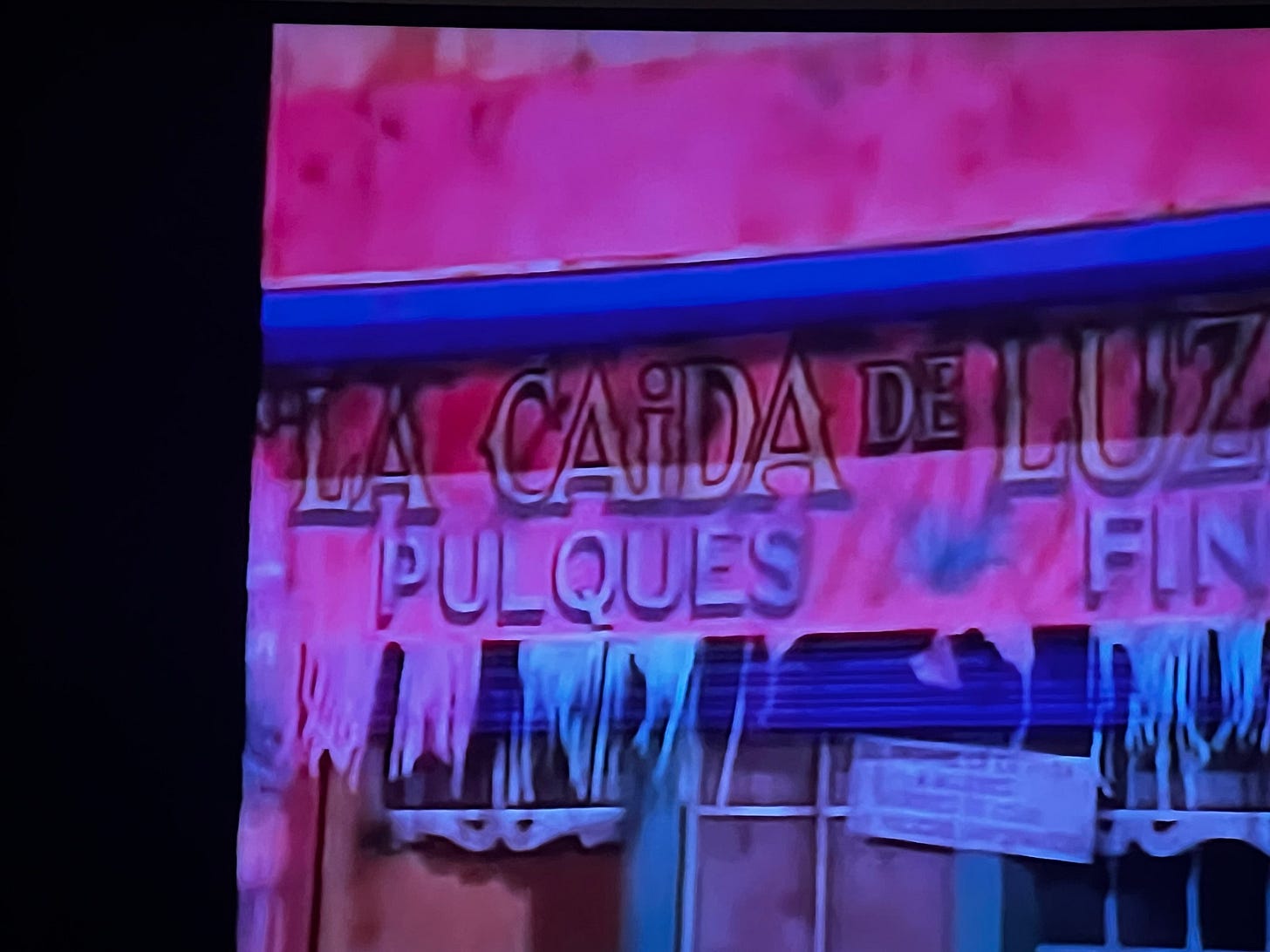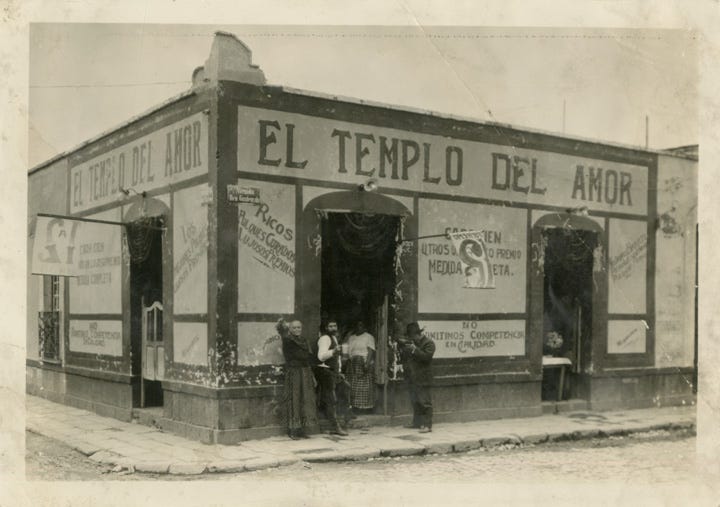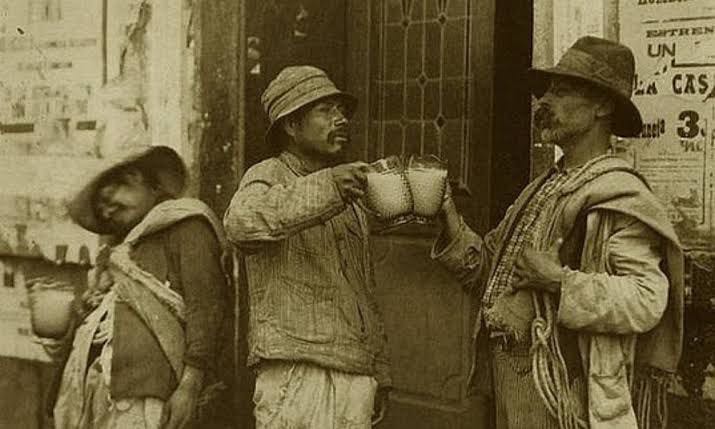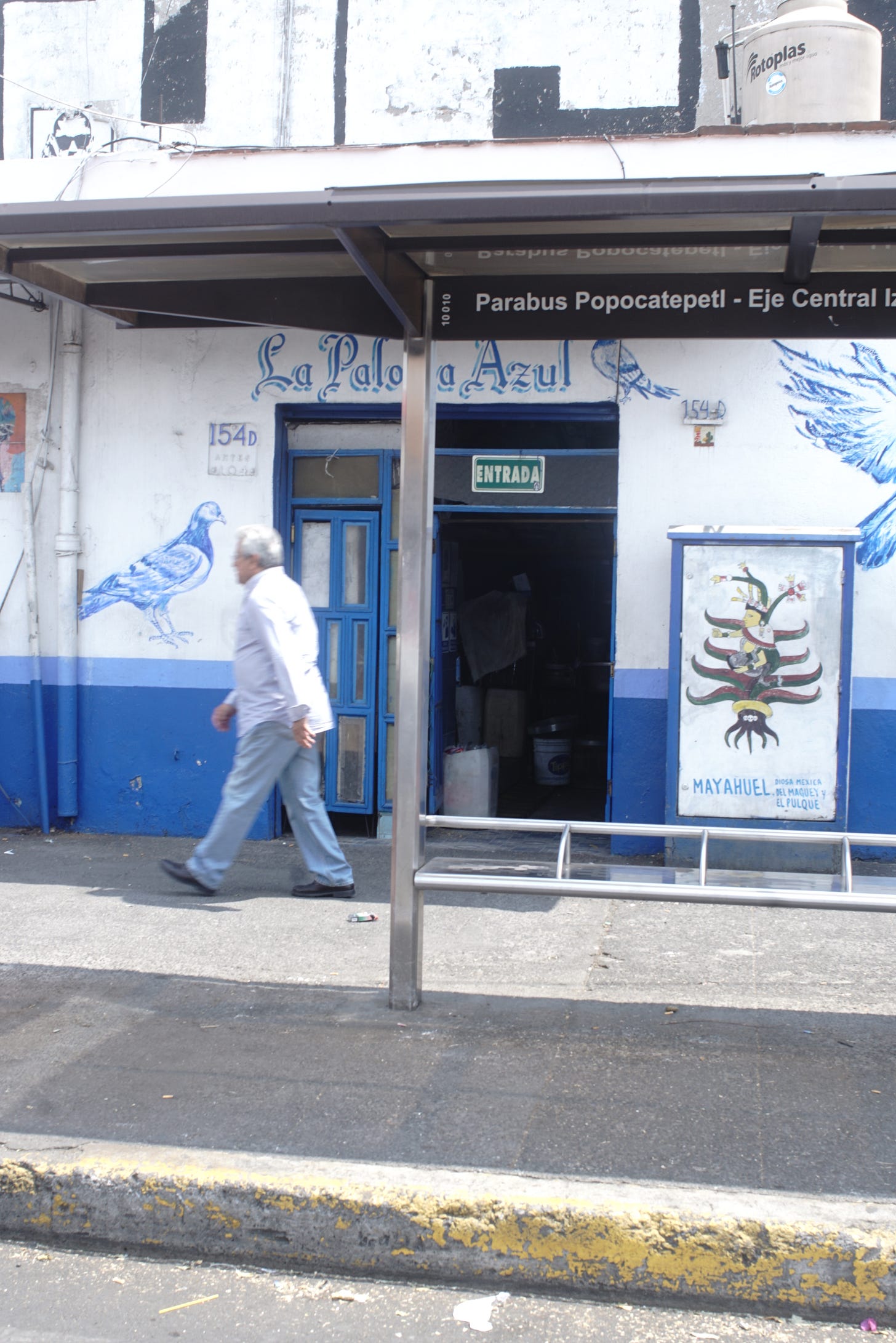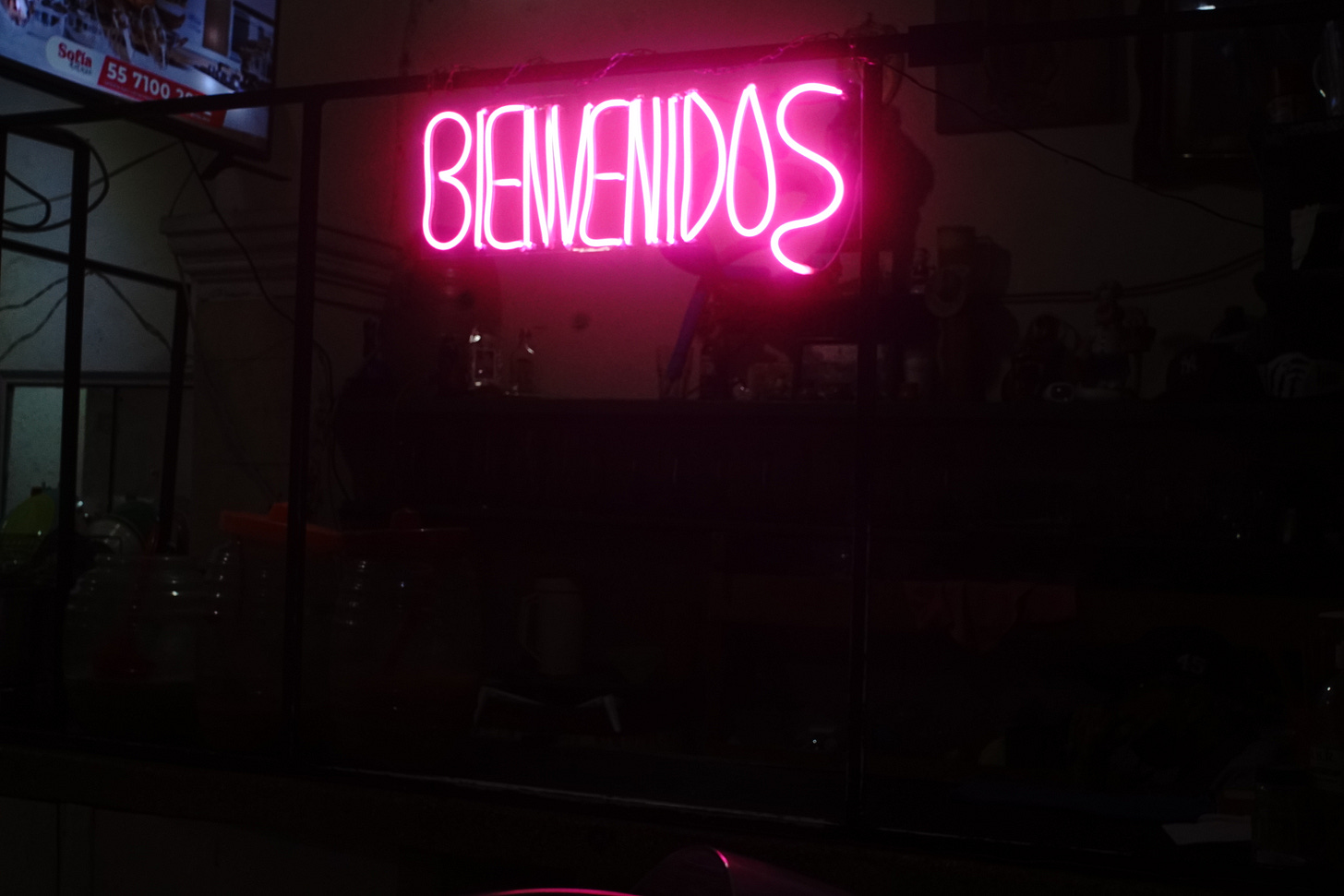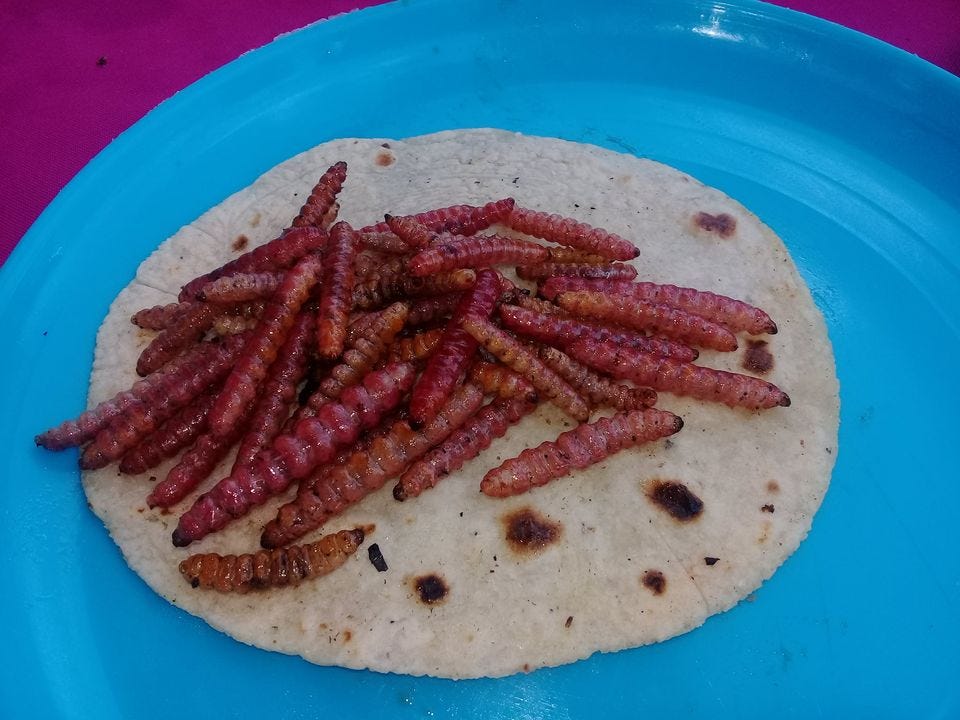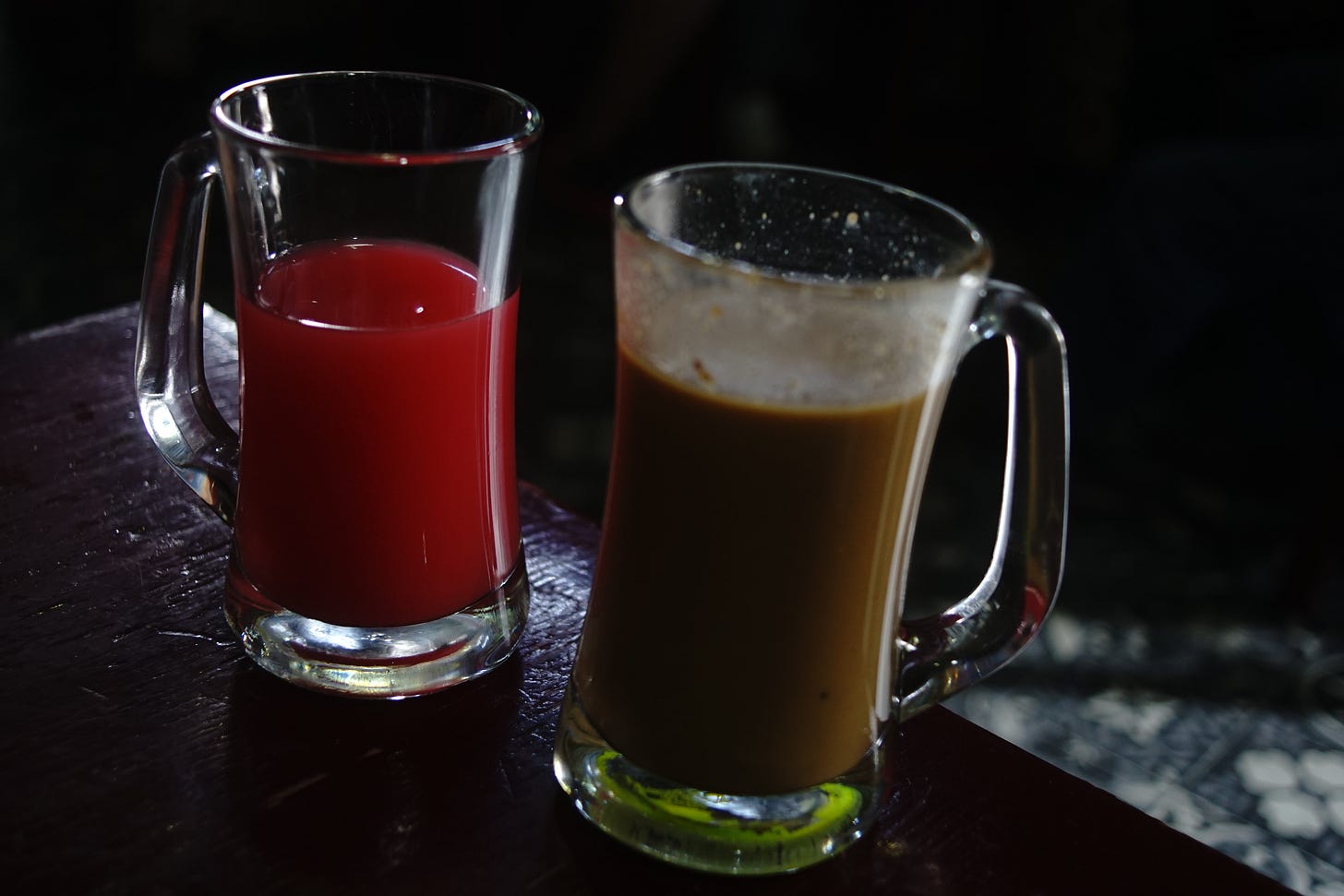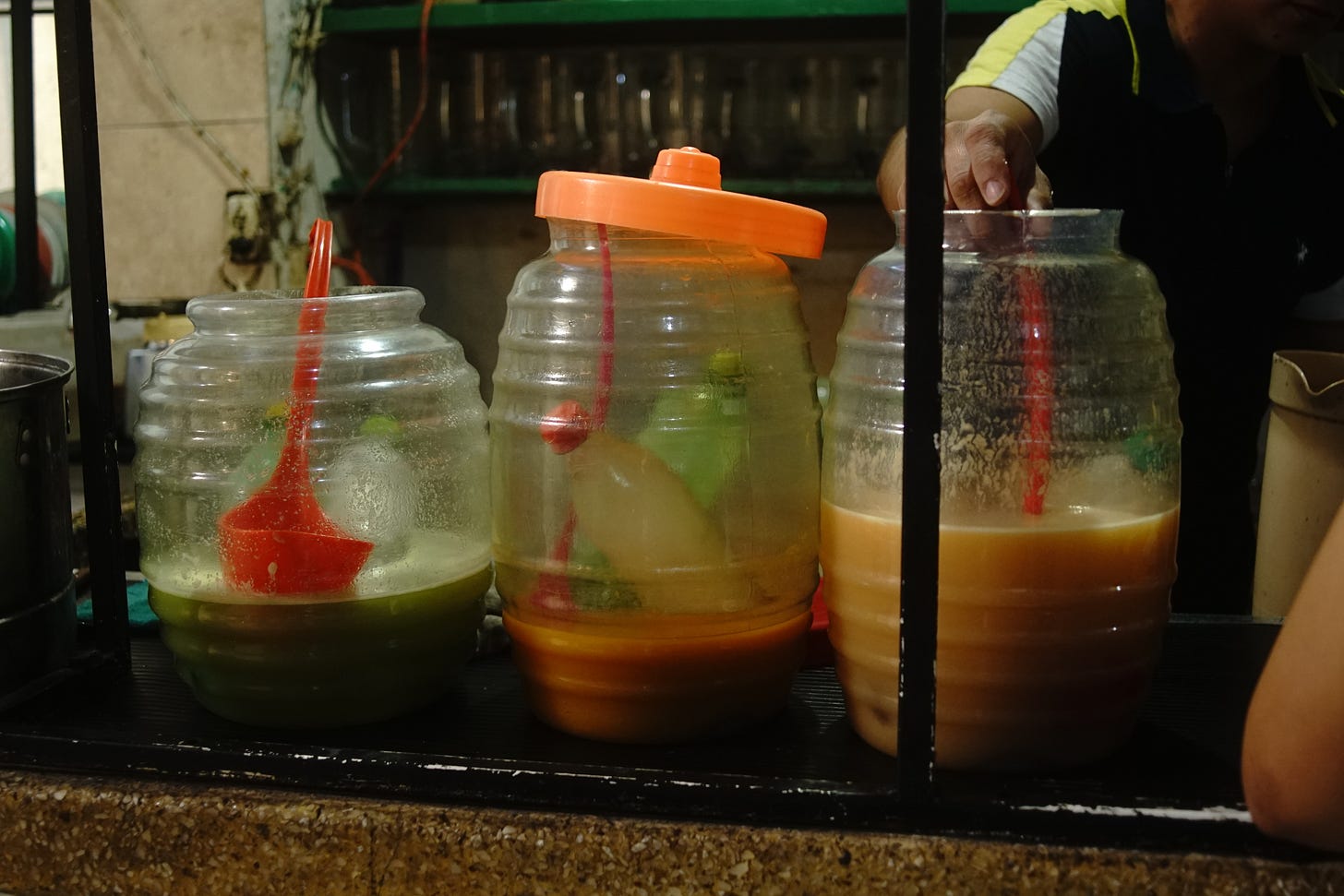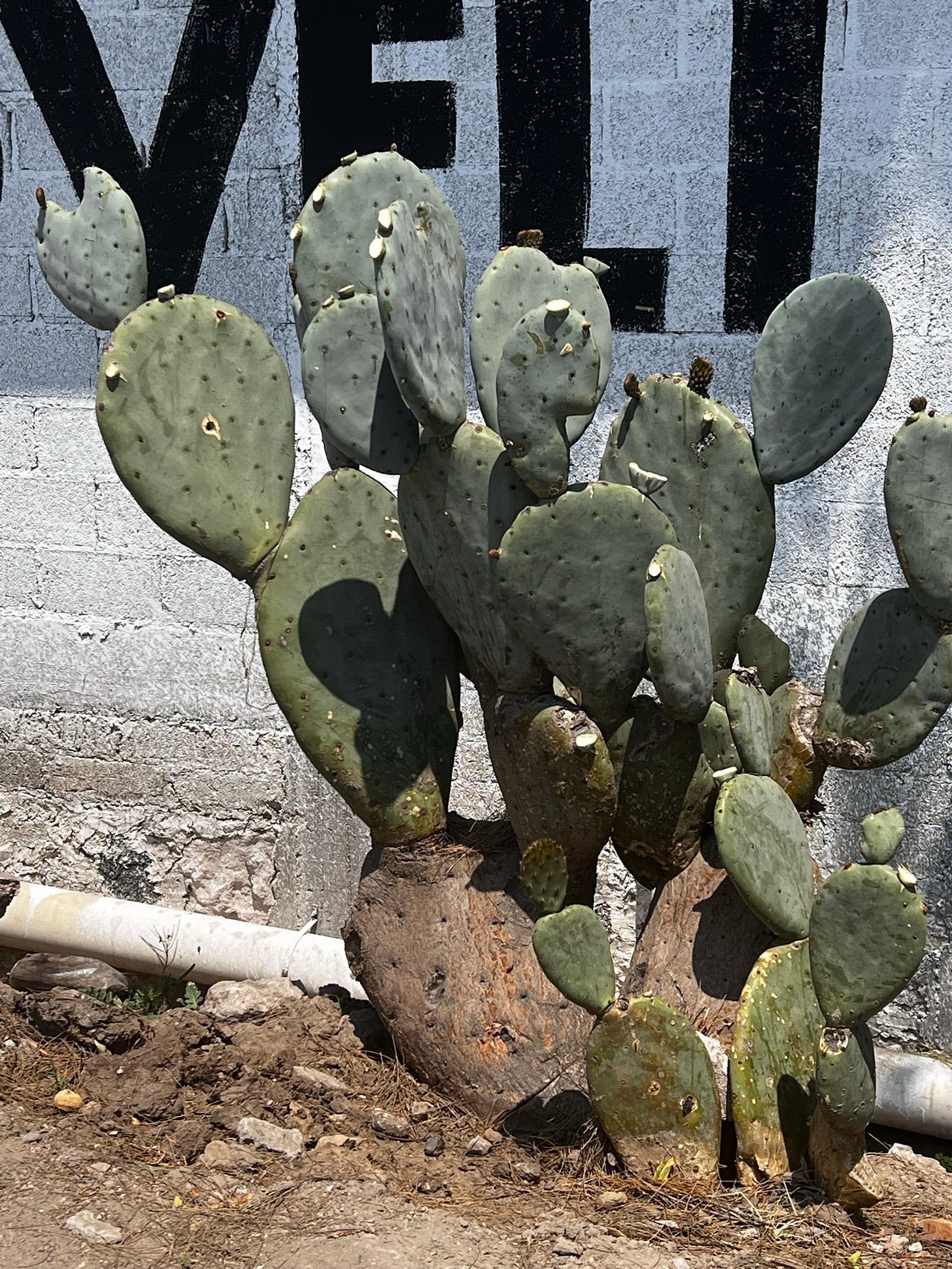Pulque magic part II
from the dawn of time up until now
Pulque, not mezcal, is the drink of Mexico. Before Christ, before wine, the gods drank pulque. The goddess Mayáhuel gave pulque to man as a present. Remember, the first maguey plant grew from her sacred burial site (see part I).
Mexico has been drinking pulque for thousands of years. Mezcal came after the Filipino still was introduced by Filipino sailors and migrants during the Spanish colonial era. Mezcal is the result of cross-pollination of cultures. But pulque is 100% indigenous to Mexico.
A 1,800 year old mural shows 164 people drinking pulque in Cholula, Puebla. The Mural of the Drinkers shows them drinking a white liquid from cups and jars. The characters in the mural are also making offerings, serving, vomiting and defecating. They are drunk. I should have listened to my friend when he said he wanted to visit this site two hours or so outside of Mexico City during his visit. Literally the biggest pyramid in the world, but I passed because all you can see now is a small mountain with a church on top. The pyramid was covered up with dirt, although there are tunnels, and now, I have just learned, there is the Mural of the Drinkers.
I am still sitting at the Paloma Azul, and I order another liter of the white stuff. I read about pulque on my phone. I am not content with just drinking it. I find: The history of pulque is the history of Mexico. The transfer of power from the indigenous social hierarchy, to Spanish colonial rule, to post-independence dictator Porfirio Diaz, to the newly anointed PRI mestizo elite after the Mexican Revolution, to the mind control of the media and its influence on cultural trends of today, all these transfers of power can be mapped in the constellation of changing consumption patterns of pulque in space and time. Who drinks pulque, where they drink it, and how much they drink has all been contingent on power structures, I decide after reading a few Wikipedia entries on my cell phone.
In pre-hispanic Mexico, pulque was sacred and many rules and codes regulated who could drink it (elite men) and who couldn’t (everyone else unless they were old, sick or recent mothers). There were complicated procedures to obtain it, and special occasions for its consumption. It was not an everyday drink, it was a ritual drink. It was special, and was not overindulged.
“pulque, it’s a wine that they drink” - Hernán Cortés
After the conquest the distinctions between social classes deteriorated and so did the taboos around the consumption of pulque. Pulque lost its ritual meaning. Everyone would drink it, and get drunk from it in a diversity of circumstances. It can hydrate safely in the absence of potable water. It contains phosphorus, calcium, iron and vitamin C.
Until the railroad was built in 1866, there was no transport of pulque outside the Central Mexican Plateau. This is where Mexico City is, and also roughly Hidalgo, Puebla, Tlaxcala. But by 1870 with the expansion of the railroad this region “los Llanos de Apan” had become an important pulque producing region. Dictator Porfirio Diaz expanded the railway to the coast and gave pulque a national market. The pulque aristocracy flourished; wealthy elites produced pulque on large haciendas up until the Mexican Revolution in 1910. There ended the Golden Age of pulque.
As a result of the Mexican Revolution, and the transfer of power, these large haciendas were broken up and redistributed, which decreased pulque production. Even if they were returned later they never reached old levels of productivity due to the destruction of infrastructure. The war displaced the population that knew how to grow the crop, which has been going on for decades, since the plant is slow growing. There was a lack of transportation and distribution of pulque due to the typical and frequent interruptions of the war, which pulque was losing.
This was the setting for the conquest of the beer industry. The reasons were political, and practical. Barley and wheat grew in lands to the North of Mexico which belonged to the new ruling class, and therefore was favored. The new government was interested in punishing those who benefited from the old regime, and to benefit their supporters. During the 30’s beer began to win territory over pulque. Beer could be bottled, transported and stored much longer than pulque. By 1941 beer consumption had exceeded pulque consumption for the first time and marked the end of the industry as it had been.
The interest of the new elites was the beer industry, in the crops of wheat and barley, and in the sale of bottled beer. A media campaign successfully smeared the reputation of pulque and caused permanent damage to the industry. La leyenda negra, the black legend, hung over pulque. Pulque was unclean, they said, and dirty. They said, human feces is used in the fermentation of pulque, and it will give you diarrhea and indigestion. Pulque causes idiocy. It is for poor people. Many public intellectuals and politicians of the time said this because of their personal stake in the beer industry. Mexico City had been the main center of the consumption of pulque, and as consumption declined the impact on producers was profound. Pulque returned to the countryside and only small producers made the beverage for local consumption.
I look around me at the people drinking their cultural patrimony at the Paloma Azul beside the bus-stop in 2024. They are part of the revival of pulque. It was never totally crushed although they tried. The hipsters too were a part of the resurgence of pulque in the city. There is an article in Vice from a few years ago that compares pulque to cum and snot, but in an endearing way. In fact, Vice published 24 articles about pulque from 2013 to 2018.
RIP Vice.
Pulque had become cool again. In fact, that time I was told by an American artist that it was unseemly for me to bartend in Mexico, which I wrote about in my article on the corrida de toros, we were drinking pulque in a shitty pulquería on Avenida Insurgentes. It was 2015 and it might have been my first ever taste of pulque.
Natural pulque is essential but the curados are what has given pulque its modern appeal. Curados are blends of fruit, nuts or any other ingredients that add flavor and sweetness. Classic flavors include celery, pink pine-nut, tomato, and red cactus fruit. The flavors offered change daily. Depending on the place, the curado might be blended fresh, they might take a scoop of natural pulque to mix with a serving of flavor mix, or they may offer pre-made blends in tubs.
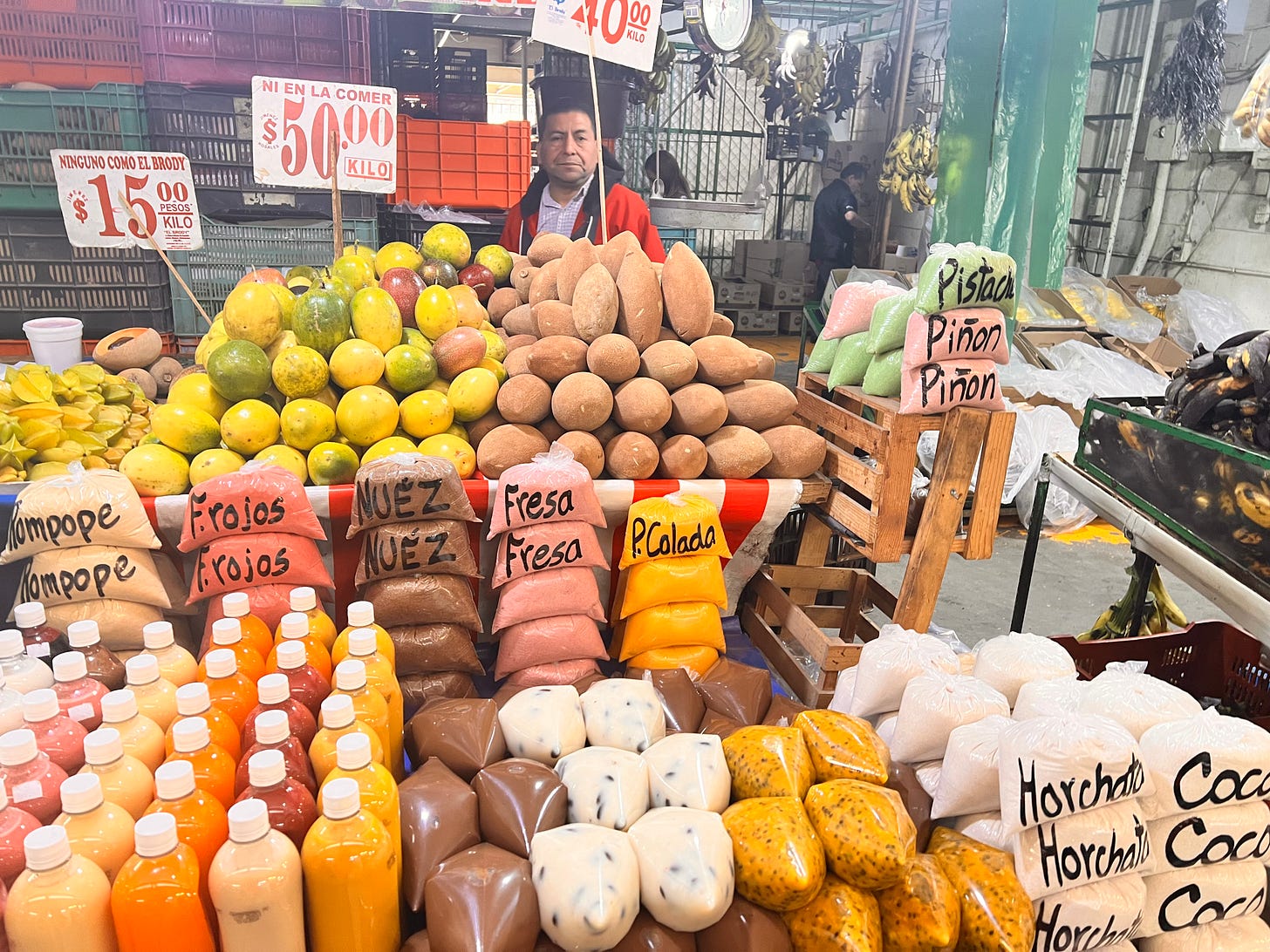
Pulque often goes with snacks. They say that one of the most delicious things that exists in gastronomy is the worm that lives on the maguey, the chinicuiles, crushed into a salsa and added to the glass of pulque. Given the opportunity, I most definitely would.
I was feeling a happy buzz but I decided to change locations. Looking at this pulque map I saw that there were countless pulquerías still in operation in Mexico City.
access interactive map here
I decided to head to La Catedral de Pulque in Colonia Obrera. Not the nicest neighbourhood, also not the worst, and two-for-one pulque on Wednesdays. La Catedral de Pulque had the trappings of an old cantina, the swinging doors from an old saloon in a Western. The walls were covered with painted murals of magueys, spiritual figures, every inch emblazoned; typical pulquería decor. The clients looked like they lived in the barrio, young and old, men and women. Less traditional than the Paloma Azul, which seemed stuck in the times when only men were allowed in the pulquería. I ordered a celery pulque because I love savory flavors. It had a crazy profile, lime, celery, peppery with a salty finish. Next I ordered a bright red grosella (red currant) which tasted yummy like bubblegum. The coffee-walnut pulque was definitely caffeinated. I began to feel a little sick because they were all sneakily quite sweet, which suits the flavor profile of many Mexicans, but not me. They were spooning the pre-mixed pulque from tubs. I wanted something a little more fresh so I biked back to my neighbourhood to visit a final spot.
This pulquería was five minutes from my place on Calle Centenario in Coyoacan. Los Pasitos de Santa Anita. It was tiny, they were playing Caifanes extremely loud. The clientele was young and hippy. They had three flavors: melon, mango and guava. I ordered the melon, and could see that their style is different. They had a huge barrel of natural pulque. They scooped it into the glass and then ladled on top some melon puree. It was not too sweet, fresh and fruity. The pulque comes daily from Hidalgo. They make you order some food but the three sopes were good and an order costs 25 pesos. A half liter of pulque is only 30 pesos. A solid/liquid nutritious meal for $4.50 CAD.
For the real thing I revisit Tlaxcala. That day, they blend pulque de cardón, fermented red cactus, before my eyes. Only during April and May. Not to be found in the city. It’s a wild fruit, not industrialized. They take out the spines so they don’t prick. I want to hold on to the pink sun setting behind La Malinche, bask in the company of contented strangers, but it is not to be found in the city. There is no greater bliss than drinking pulque on a holiday in the countryside of central Mexico. Everything is contained in it.
Friends I hope you enjoyed this story. Please consider upgrading to a paid subscription. This is a project of love, but I need your support to continue to create these careful articles. If you can’t do a paid subscription, please share the blog with anyone who you know who might like to drink, escape, or imagine.




